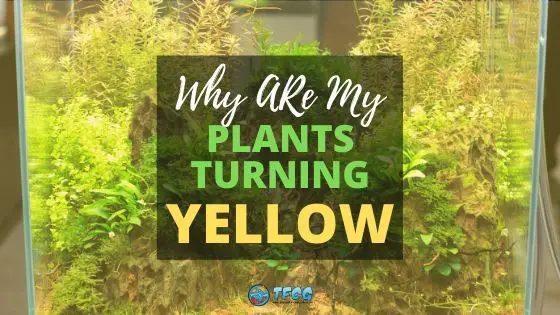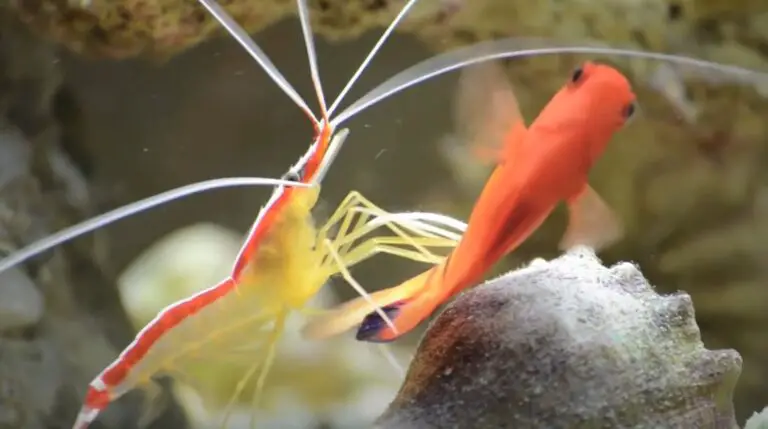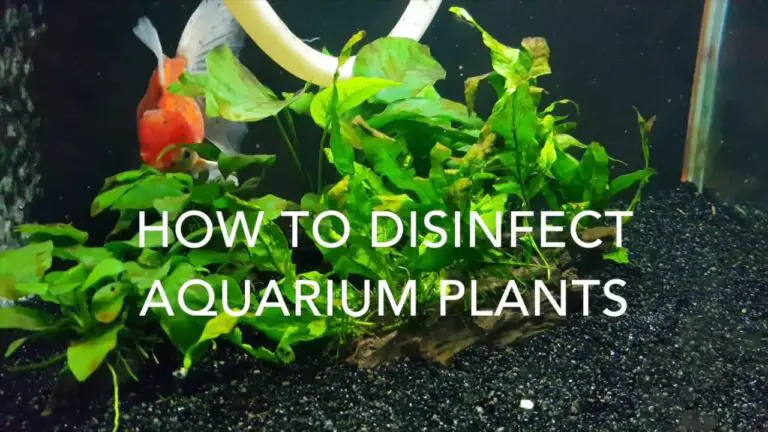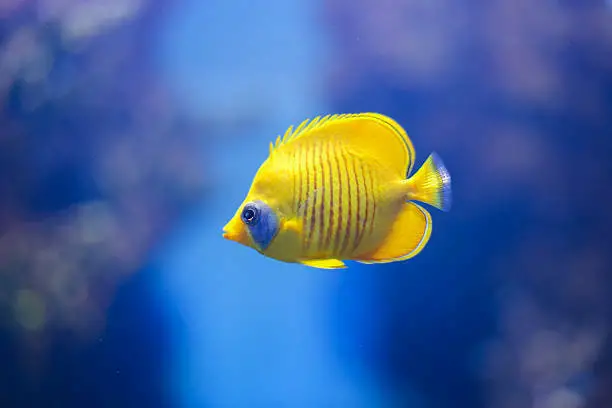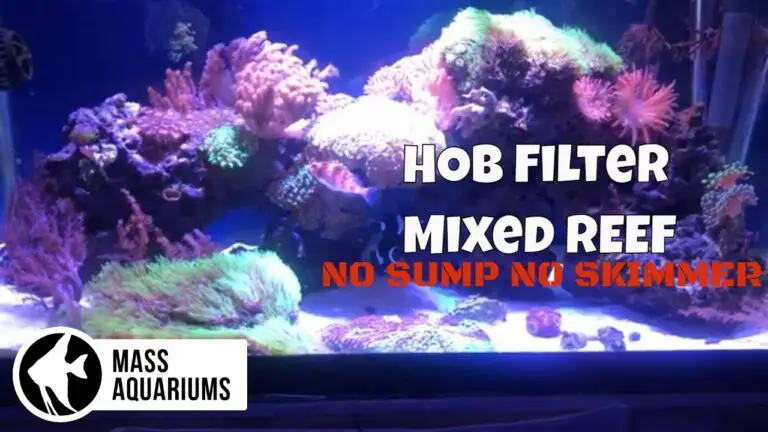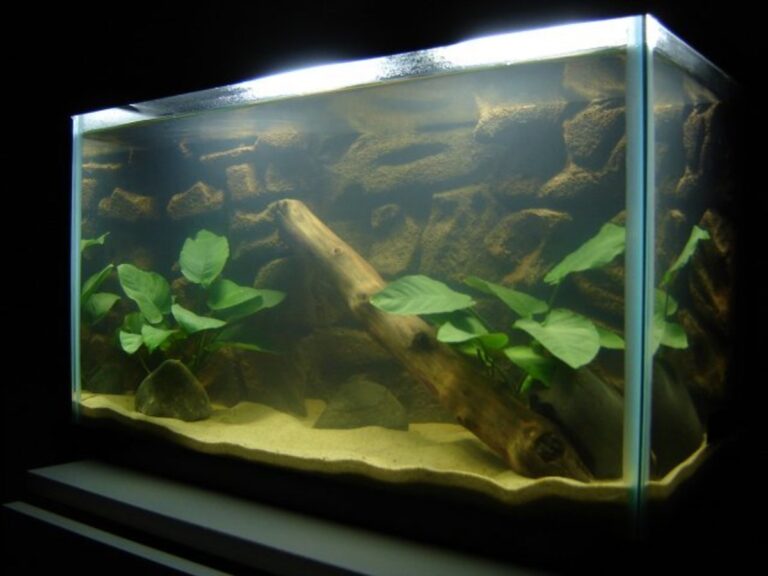Why are My Aquarium Plants Turning Yellow?
My aquarium plants turning yellow can be caused by a number of things. The most common causes are insufficient light, nutrient deficiencies, or too much fertilizer being used in the tank.
If your aquarium does not have enough light to sustain the plants, then they will start to turn yellow as they are not able to produce chlorophyll and photosynthesis will cease.
Additionally, if there is an imbalance of nutrients in the water such as iron, potassium or nitrogen this can cause yellowing leaves.
Finally if you are over-fertilizing your tank it could also result in plant discoloration due to excessive nitrates and phosphates that may build up over time.
It is important to check all these factors when trying to diagnose why your aquarium plants are turning yellow so you can take corrective action and get them back into good health.
If your aquarium plants are turning yellow, this is likely due to a lack of nutrients or too much light. Yellowing leaves can also be caused by poor water quality, an imbalance in pH levels, or high levels of nitrates and phosphates in the tank.
To fix the problem, you should check and adjust nutrient levels if necessary. Increase or decrease lighting as needed. Make sure your filter is functioning properly and test for any potential contaminants that could be causing issues.
With some simple maintenance steps, you’ll have healthy green aquarium plants again soon!
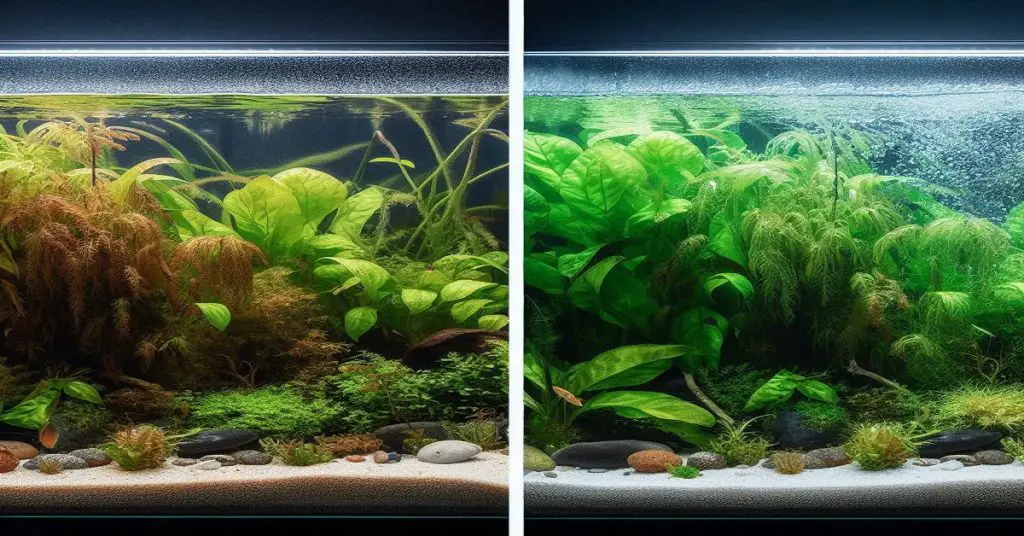
New Aquarium Plants Turning Yellow
A common problem with aquarium plants is that they can start to turn yellow, particularly if the water quality is not optimal. This could be due to a number of factors, such as an imbalance in pH levels or a lack of nutrients in the water.
It’s important to check your tank parameters regularly and make sure you are providing adequate care for your plants so that they stay healthy and vibrant.
It might help to add some fertilizer specifically designed for aquarium plants to give them the necessary nutrients for growth.
Aquarium Plants Turning Yellow And Brown
If your aquarium plants are turning yellow and brown, it could be an indication of several things. It may mean that the plant is getting too much light or not enough nutrients in the water, such as nitrogen or phosphate.
If a sudden change in temperature occurred, this could also cause the leaves to discolor.
If there is a fungal infection present in the aquarium, it could lead to yellow and brown patches on the plants’ leaves.
To remedy this issue, first check all parameters related to lighting and nutrient levels before taking steps to treat any possible fungal infections.
Why Do My Aquarium Plants Look Dirty?
Your aquarium plants may look dirty if there is an accumulation of debris and detritus in the tank. This can occur due to overfeeding, poor water quality, or inadequate filtration.
To combat this issue, regularly perform water changes, clean away any visible debris from the substrate and rocks with a gravel vacuum cleaner, increase your filter’s output if necessary, and feed only what your fish need.
How to Add Nitrogen to Aquarium?
Adding nitrogen to an aquarium is an important part of keeping fish and other aquatic life healthy. Nitrogen helps maintain the proper pH balance in a tank, as well as providing essential nutrients for plant growth.
The most common way to add nitrogen to an aquarium is through the use of nitrate-rich fertilizers, which can be added directly into the water or mixed with substrate before being placed in the tank.
In addition, bacteria found naturally in aquariums will break down organic matter such as fish waste and uneaten food that release ammonia over time, creating more natural sources of nitrogen for your tank.
How to Fix Nitrogen Deficiency in Aquarium Plants?
If you notice that your aquarium plants are starting to display yellowing of their leaves, it is likely due to nitrogen deficiency. Fortunately, there are a few steps you can take in order to fix this issue and get your aquarium plants back on track.
To begin, test the water in the tank for nitrate levels, if they are low, add an aquarium plant fertilizer with added Nitrogen.
Check that the substrate has not been topped off too high as this can lead to oxygen depletion; adjust accordingly.
Finally, ensure your fish population isn’t too large for the size of tank and reduce feeding frequency if necessary. With these simple changes you should soon see a difference in your aquatic vegetation!
Floating Plants Turning Yellow
Floating plants turning yellow is typically a sign of nutrient deficiencies. This can be caused by lack of access to proper nutrients or too much light and heat, which can cause the plant to burn up its available resources faster than they are replenished.
To help prevent this issue, make sure your floating plants have access to all the necessary nutrients and that their environment is kept at an optimal temperature and lighting level for their species.
Nitrogen for Aquarium Plants
Nitrogen is an essential nutrient for aquarium plants, helping to ensure healthy growth and development. It promotes the production of chlorophyll in the leaves, which aids photosynthesis and helps create strong stems.
Nitrogen can be provided naturally by fish waste or other organic matter that breaks down in the water column, but it may also need to be supplemented with a liquid fertilizer or added directly via root tabs.
Keeping nitrogen levels appropriate can help maintain lush plant growth while preventing algae outbreaks.
How Do I Make My Aquarium Plants Greener?
One of the best ways to make aquarium plants greener is by providing them with the right kind of nutrients. The most important nutrient for aquarium plants is iron, which helps promote their growth and enhance their color. It’s also essential to maintain a proper balance between nitrogen and carbon dioxide in the water, as this will help foster photosynthesis and provide your plants with energy to grow.
Additionally, you should ensure that your aquarium has adequate lighting – either natural or artificial – since this allows for photosynthesis which encourages greening. Lastly, it’s necessary to regularly clean away any debris from around the roots of your plants so they can obtain oxygen more easily; however, be sure not to over-clean as this can damage delicate root systems!
Why are My Aquarium Plants Losing Color?
Aquarium plants add beauty and life to your tank, so it can be disheartening when they start losing color. Losing color could be due to several things such as light intensity, water parameters (ph level, nitrate levels etc.), nutrient deficiencies or the presence of a chemical imbalance in the tank.
If your aquarium plants are losing color, one of the first steps should be to check their lighting—not enough light will cause them to lose vibrancy and eventually die off.
You should also make sure that you’re using a good quality plant fertilizer with all necessary micronutrients for healthy growth. You may need to adjust water parameters by adding dechlorinator.
And making sure pH is within acceptable range for particular species of plants. In order to prevent any nutrient deficiencies from developing in the tank environment which can lead to loss of color.
If none of these issues seem like an issue then it might simply mean that your aquarium is overcrowded or there is too much competition among aquatic vegetation for resources; try thinning out some plants and see if this helps with restoring their natural colors!
Is Yellow Led Light Good for Aquarium Plants?
Yes, yellow LED light is good for aquarium plants. This type of light helps to promote photosynthesis in aquatic plants, which is essential for healthy growth and a vibrant aquarium environment.
The warm yellow color of this LED lighting also promotes plant health by encouraging the development of new leaves and stems.
Additionally, it has been proven that yellow LED lights can help reduce algal blooms as they don’t produce as much heat as other types of lighting which can cause algae to flourish in an aquarium environment.
Because LED lights are energy efficient they will use less electricity than traditional fluorescent bulbs or halogen lamps while still providing the same level of illumination necessary for your aquatic flora to thrive!
What Does Potassium Deficiency Look Like in Aquarium Plants?
Potassium deficiency in aquarium plants can be difficult to spot, as the symptoms are often subtle and hard to distinguish from other nutrient deficiencies.
Potassium-deficient plants will show yellowing of their lower leaves (starting from the base of the plant), poor growth and slow development, lack of flowering or fruiting production.
Smaller than normal new leaves that may look misshapen or rolled up, and a general weakening of overall vigor. If left untreated for too long, potassium deficient plants can succumb to other problems such as root rot due to weakened defenses against disease pathogens.
It’s important to note that these symptoms could also be indicative of an underlying problem. Such as improper lighting levels or incorrect pH balance.
So it’s best to observe your tank carefully before ruling out any potential causes. With regular testing and proper attention given by a knowledgeable aquarist.
Most instances of potassium deficiency can easily be remedied with fertilizer treatments designed specifically for aquatic use.
Common problems of aquarium Plant Deficiencies yellow & damage leaves
Conclusion
In conclusion, yellowing aquarium plants can be caused by a variety of factors. It is important to diagnose the root cause in order to properly address the issue. Poor lighting, too much light, lack of fertilizer or a build-up of toxins could all contribute to yellowing.
As long as you are careful with your tank maintenance and keep an eye on your water parameters and nutrient levels, you should be able to enjoy healthy aquatic plants in your aquarium for years to come.
